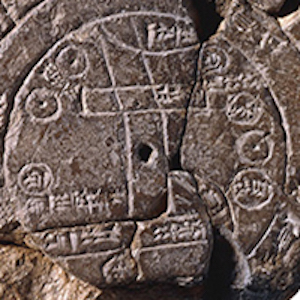Asia

The Jingban tianwen quantu Map of the World
Like many maps in the pre-modern and early-modern world, this map from China at the end of the 18th century reflected a deeply egocentric worldview.

Heilbrunn Timeline of Art History
The Metropolitan Museum of Art's Heilbrunn Timeline of Art History is a reference, research, and teaching tool for students and instructors interested in global art history or teaching global history through art.
Babylonian Map Tablet
This ancient map depicts the known world as imagined by the Babylonians of the 6th century BCE. Like many ancient maps, this cuneiform tablet is concerned less with mathematically plotting space and direction than with simply capturing the various places and peoples in the world around Babylon.

The Song Dynasty in China
What makes this module particularly interesting is its usage of a 12th century picture scroll as a means to explore various facets of Chinese life during this period.Excerpt from Aguinaldo’s Case Against The United States
The Philippines, an archipelago of over 7,000 islands in the western Pacific Ocean, had been a Spanish colony for over 300 years by the 1890s. Filipino nationalists led by Emilio Aguinaldo rebelled against Spanish rule beginning in 1896.

Japanese Illustrated Books from the Edo and Meiji Periods
Spanning over three hundred years of Japanese book history, the collection includes famous Edo period (1603-1868) artists such as Andō Hiroshige (1797-1858) and Katsushika Hokusai (1760-1849).
Photo Library of the French School of Asian Studies
The EFEO has long been one of the leading centres of architectural, archaeological, epigraphic, ethnographic, and art historical research on Asia and this effort to digitise their extensive collection of photographs offers scholars and the public a new lens with which they can view a visually
Digital Archive: International History Declassified
An extensive repository that collects declassified archival records from all over the world, the Wilson Center's Digital Archive: International History Declassified is an essential resource for scholars, educators, and students interested in international history.
The Chinese Whispers
[The Chinese Whispers] serves as an important and powerful—if somewhat unconventional—primary source, allowing instructors and students to grapple with a variety of topics including Indonesian history, studies of the Overseas Chinese as a diasporic community, and notions of identity and belonging
Buddha Sheltered by a Naga
This small bronze statue made in Cambodia in the twelfth century shows the serpent king Muchilinda, a type of mythical half human and half cobra being known as a naga, protecting the Buddha.